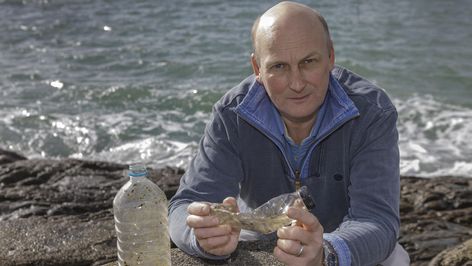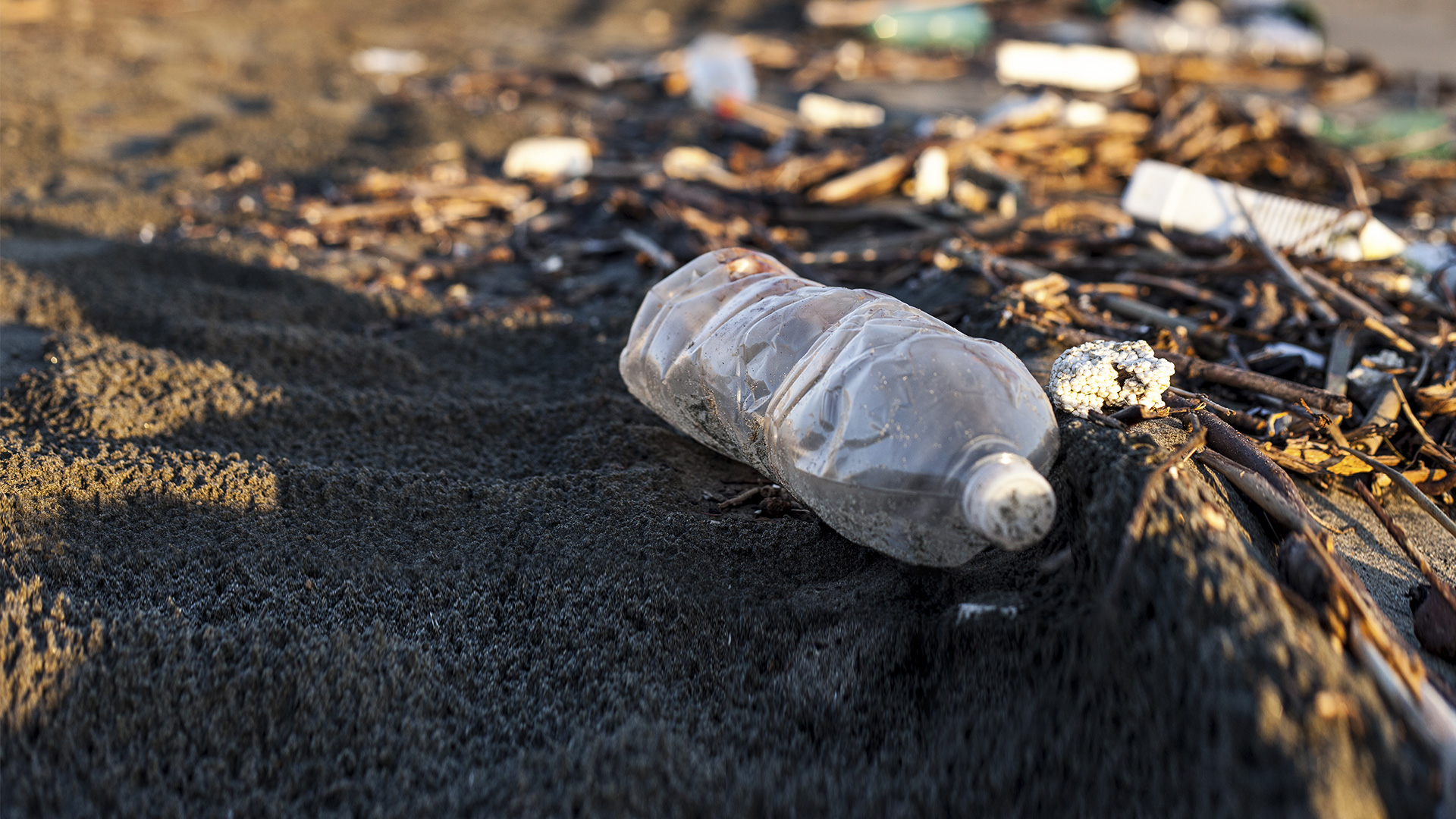"The cause is on land"
Where does microplastic in the oceans come from?
The main sources of these particles, many of which are smaller than a grain of sand, are textiles, cosmetics and in particular the fragmentation of larger items. The bulk of all litter by by weight is larger items like bottles or packaging and these are fragmenting over time into microplastics. To reduce microplastic, we have to address these larger items, as they are the microplastic of tomorrow. This affects all of society, it is just as relevant for people living 500 kilometres away from the coast. Rivers are an important pathway for microplastic, although we don't have much data on this.

The marine biologist Prof. Dr. Richard Thompson from Plymouth University was one of the first scientists drawing attention to the wide distribution of microscopic plastic debris in the oceans. He has been a member of numerous international working groups on marine litter including UNEP and EU and is currently focusing on finding solutions for the problem.
What can be done to prevent plastic from getting into the sea?
We need a systemic change all along the supply chain. The biggest problem is single use items. We produce 300 million tons of plastic per year, 40 percent of which is single use items. There is a considerable lack of thought at the design stage. Many items can't be recycled because of inappropriate design. For example, most packaging consists of PET, which is highly recyclable. But when bottles are coloured for marketing reasons, they are either unrecognisable for the machinery separating the waste or have little value to recyclers, and hence they can end up in landfill. We have created a substantial problem, as the types packaging have diversified widely. There are many different types of plastics and different colouring. That's a major challenge for recycling.
How can psychologists help to tackle the problem?
My colleague Sabine Pahl from Plymouth University and I want to find out how to use people's passion for the marine environment to raise their awareness for the problem of marine litter. Plastic in the seas is only a symptom – the cause is on land. Therefore, it is not a solution to clean up the oceans. That would be like mopping up a bathroom where the bathtub is flowing over without turning off the tap. We also want to change behaviour and perceptions. A key problem is that unless designed appropriately plastics often have no value in recycling. We use it in an instant and discard it.
What do you think of the German system to take single use plastic bottles back in the supermarket for a pawn, the so called “Dosenpfand”?
This could be a useful step, but psychologists tell us that an undesired behaviour returns if the incentive is taken away. Apart from that, bottles are not the only type of single use packaging. What we really need is a circular economy where end of life plastics are recycled into new items. There would be a real win here, because we could also reduce oil and gas consumption, litter and landfill.
Further information:


